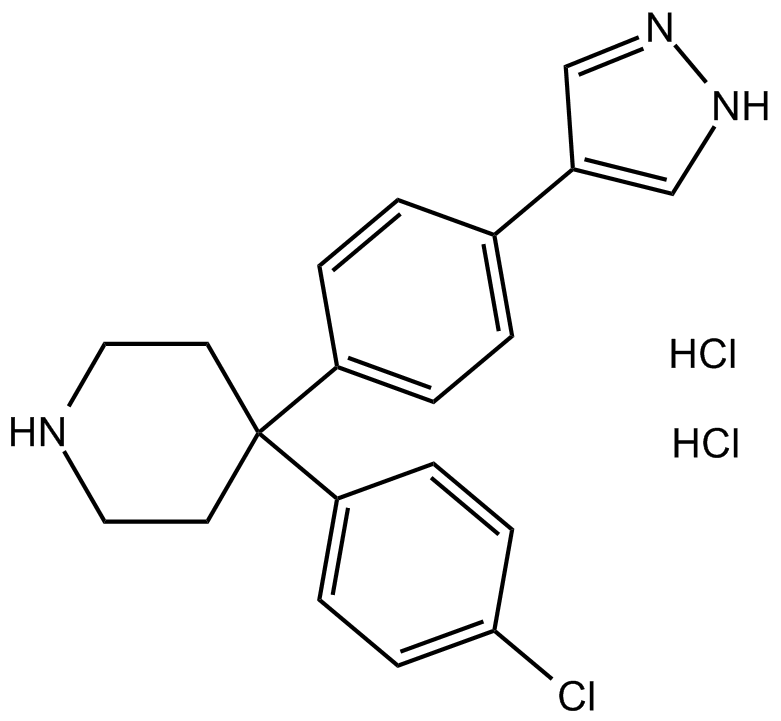AT7867 dihydrochloride |
| Catalog No.GC10918 |
A potent and orally bioavailable pan-Akt inhibitor
Products are for research use only. Not for human use. We do not sell to patients.

Cas No.: 1431697-86-7
Sample solution is provided at 25 µL, 10mM.
IC50: AKT1 32 nM, AKT2 17 nM, AKT3 47 nM, PKA 20 nM
The serine/threonine kinase AKT plays a pivotal role in signal transduction events involved in malignant transformation and chemoresistance and is an attractive target for the development of cancer therapeutics. Structure-based drug design and fragment-based lead discovery have identified AT7867 as a novel and potent inhibitor of both AKT and the downstream kinase p70 S6 kinase (p70S6K) and also of protein kinase A.
In vitro: AT7867 potently inhibits both AKT and p70S6K activity, measured by inhibition of protein phosphorylation of GSK3β and S6 ribosomal, and also the growth inhibition in a panel of human cancer cell lines. Induction of apoptosis by AT7867 was detected by multiple methods in tumor cells followingAT7867 treatment [1].
In vivo: Administration ofAT7867 (90 mg/kg p.o. or 20 mg/kg i.p.) to athymic mice implanted with the PTEN-deficient U87MG human glioblastoma xenograft model caused inhibition of phosphorylation of downstream substrates of both AKTand p70S6K and induction of apoptosis. These AT7867 doses also led to inhibition of human tumor growth in PTEN-deficient xenograft models. These findings suggest that a novel strategy of AKT and p70S6K blockade may have therapeutic value and supports further evaluation of AT7867 as a singleagent anticancer strategy [1].
Clinical trial: Currently no clinical data are available.
References:
[1] Grimshaw KM, Hunter LJ, Yap TA, Heaton SP, Walton MI, Woodhead SJ, Fazal L, Reule M, Davies TG, Seavers LC, Lock V, Lyons JF, Thompson NT, Workman P, Garrett MD. AT7867 is a potent and oral inhibitor of AKT and p70 S6 kinase that induces pharmacodynamic changes and inhibits human tumor xenograft growth. Mol Cancer Ther. 2010;9(5):1100-10.
Average Rating: 5 (Based on Reviews and 30 reference(s) in Google Scholar.)
GLPBIO products are for RESEARCH USE ONLY. Please make sure your review or question is research based.
Required fields are marked with *




















